Sunday, September 30, 2018
Kashmiri tea can only be enjoyed in a Kashmiri kho:s (cup)
There is no home in Kashmir that does not have a samovar. Each family has one or two samovars. Kashmiris make tea in the samovar. Kashmiris are very fond of tea. That is why any time is considered tea time.

Koshur Sama:va:r with 4 khae:s (cups)
Samovars are
not of only one type. Some samovars, in which only one or two cups of tea
can be made, are very small. Other samovars, in which hundreds of cups
of tea can be made, are very big. Samovars are made of copper or brass.
Kashmiris can
make two or three types of tea in the samovar. The kehvi is the favorite
tea of Kashmiris. This tea is also call mogil cha:y. There is a special
tea for making it. It is called bambay cha:y. The bambay cha:y, sugar,
cardamom, cinnamon, and almonds are boiled in water, but no milk is added.
The second type of tea is dabal cha:y. It is made with bambay cha:y, sugar, cardamom, and almonds. Milk, however, is also added. Kashmiri Pandits serve dabal cha:y at weddings and on feasts.
The third type or tea is called shi:r' cha:y. This type is not made with bambay cha:y. There is another kind of tea used for making that. It is prepared with bicarbonate of soda, salt, milk, and cream (mala:y). It has a very pleasant color. Shi:r' cha:y also is a typically Kashmiri tea, but not everyone likes it.
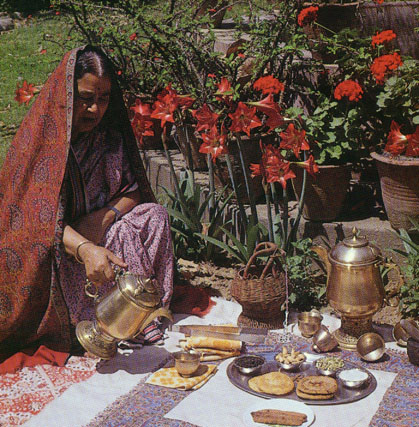
Tea being poured from a sama:va:r into a kho:s (cup).
A kangir, the traditional Kashmiri fire-pot, is nearby.
It is difficult to say when the samovar was first introduced into Kashmir. In addition to Kashmir, the samovar is also found in Russia and Persia. Kashmiri tea can only be enjoyed in a Kashmiri kho:s (cup)Text reproduced from:
An Introduction to Spoken Kashmiri
by Braj B. Kachru
WATER CHESTNUT KERNELS ( MESSA OR GOEJJI ) OF KASHMIR
WATER CHESTNUT KERNELS ( MESSA OR GOEJJI ) OF KASHMIR.
( A water chestnut kernels seller in kashmir )
A WATER CHESTNUT KERNELS ( MESSA
OR GOEJJI ) OF KASHMIR.
Photographs Autar Mota
The water chestnut is an aquatic
plant that bears a rough and thick skin. It may not be a good looking fruit but
this water fruit has a single, large, white colored edible seed, inside. The
plant grows in ponds, marshes and seasonal and perennial lakes. The seed is
triangular in shape, white and thick and has a mild sweet taste and flavor. The
seed coat of the raw singhara is a little difficult to remove with the fingers.
It can be either be removed by slicing it into two pieces or by boiling the
fruit which makes the seed coat soft enough to remove it by hand.
Water Chest nuts or Singhara (
Ghour in kashmiri ) extracted from lakes and reservoirs of kashmir has three
main varieties namely BASMATI , DOGRU and KANGAR . Basmati is the chief variety
with thin skin and more kernel. The Dogru is a larger variety with thick shell
and small kernel while the Kangar has thick shell with long projecting horns
with a very small size of the kernel. The water chest nut kernels (known in
kashmiri as Messa or Gojji ) are sold everywhere in kashmir . Every kashmiri
likes them . These are fried with rice powder and sold by local halwaiis in
kashmir .
We would buy this stuff , wash it clean , Mix
them with rice powder , add a pinch of salt and dry red kashmiri chilly
powder
also some little kala zeera. We would
then add small quantity of water to make it appear like paste. Fry
a And then we would fry them eat them like crunchy and crispy
Pakorras . We never added red edible color. The kashmiri red chilly
powder did good coloring .
Kashmiri Pandits use powder of
dried kernels of water chestnuts (known as Ghaarie Aut in kashmiri ) for making
Purrees and Halwa or other items to be consumed during religious fasts and
festivals.
These singharas or water
Chestnuts are rich in minerals very very
poor in Carbohydrates and protiens. The minerals present are all useful to our
body . The main minerals that are
present in water chestnuts are Calcium,Iron,Magnesium,Phosphorus,Potassium,Sodium
and Zinc.
( A woman selling Water chestnuts extracted from wular Lake in Bandipore , kashmir )
There are many benefits of Water
chestnuts . It has some useful minerals like iodine and manganese that help in
maintaining proper functioning of the thyroid gland. Water chest nuts are rich
in polyphenolic and flavonoid antioxidant and thus possess anti-bacterial,
antiviral, anticancer and antioxidant properties. The juice of water chestnut
is used to control diarrhea and dysentery in various Non allopathic systems of
medicines. Water chestnuts are excellent sources of potassium , a mineral that
is vital for proper muscle and neural functioning. Potassium also regulates
water retention and blood pressure by balancing sodium.
So have enough of them ..
( Autar Mota )
IMPORTANCE OF KANGIR
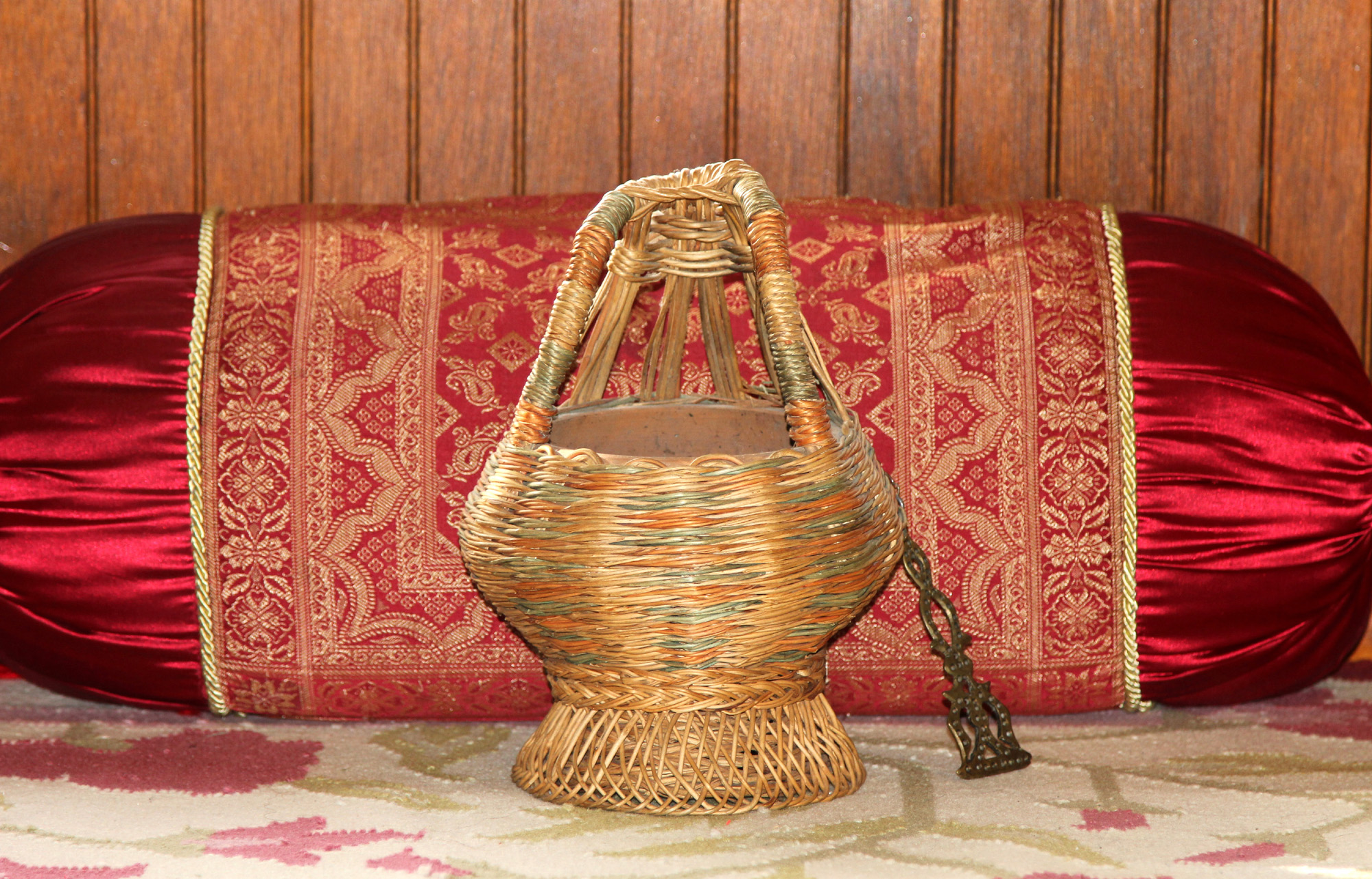 IMPORTANCE OF KANGIR IN KASHMIR-CULTURE Autar Krishan Razdan |
|
|
Kashmir
and Kangir are densely related to each other. Wherever the Kangir
reaches, it fuels the interest of people and from there an interest to
visit Kashmir. Kangirs are seen in every Kashmiri home, irrespective of
season. Kashmiris sometimes compare their own behavior with the behavior
of Charcoal used in the earthen bowl inside the Kangir. The way
charcoal burns hot with embers, then cools, and heats again upon
stirring is often compared with how Kashmiris burn hot and cold with
emotion. There is many Kashmiri proverbs about the Kangir.
Kashmiris are so attached to the Kangir that they find a reason to use it in every season. In colder months, it is carried inside of a long garment called the Pheran which is worn as an overall and kept close to the body. In lesser cold, it is used to warm the extremeties. It is sometimes used to bake a potato or to cook an egg. It is used to burn incense. The dangers of the Kangir to cause burn or fire nothwithstanding, it is held very dear by Kashmiris. They sing paeans for it: I am fond of you,my Kangir My Kangir,I have bought you from Chhaar My lovely Kangir of Anantnag I will die for you, my Kangir  In a Kashmiri folk-song, the yearly use of Kangir has been described by its fair weather friend in a beautiful manner: In a Kashmiri folk-song, the yearly use of Kangir has been described by its fair weather friend in a beautiful manner:Oh Kangir Charcoal will not burn in your bowl in April You will become untouchable in May You leave us in June Your youth goes in July Everybody forget you in August Yes,a messenger is sent to you in September to come again In October,Charcoal begins to burn in your bowl In November,you become my sweet- heart In December,I become your slave In January,dry leaves of Chinar are burnt in you In,February,I begin to distance from you In March,your importance is no more Not only Kashmiris, but all who visit Kashmir in the colder months love the Kangir. It is an important tool to save everyone in chilly weather. According to a Kashmiri proverb, the love for a Kangir matches the love of Lailafor Majnu. Without the Kangir, it would not be easy for Kashmiris to survive the cold. The same Kangir however becomes a weapon if God forbid someone has a slip of tongue. An exchange of bitter words could soon become an exchange of Kangirs, delivered directly to the other’s head. Wherever Kashmiris have gone, they have taken their Kangir along. Even in Rajasthan which is ruthlessly hot in the summer, it is used in a couple of cooler months or simply retained for decorative purposes. There is now production of the Kangir even in Jammu, the winter capital of state. However it is not much used in the very cold Ladakh. That might be due to the fact that the raw material which is used to make it is not available there. It may also be due to the non-availability of Charcoal, because there are no forests in this cold mountain desert. People In Ladakh mostly use indigenously produced woolens for protection from cold. The Kangir reached Amritsar and Lahore in the 19th century, alongwith Kashmiris who started to lodge there permanently. Certain Kangirs are being woven and prepared outside Kashmir also these days but the design and art of weaving a Kashmiri Kangir is confined to Kashmiris only. The Kangirs which are woven and prepared in Kashmir have their own form. Kangirs made in Bandipora and Chrar are considered most special of all Kangirs. The special type of weaving makes these Kangirs a work of art. That is why some people choose to keep these only for decorative purposes. A Kangir made of ‘Linya’ wicker work is considered the best and it remains warm for longer. Kangirs made in Zaingir are considered the most durable. One can put charcoal from the mulberry in these, even though it gets pretty hot. Durability of a Kangir depends on its size and the art of weaving. It depends upon the quality of wicker. It is necessary to have its upper part called the “Kop” built with wisdom. It must be stronger than all other parts. A Kangir woven in delicate branches of wicker, gives you more warmth, but this does not last long. These branches become dry fast and then burn dark. Kangirs woven with the “Posh” branches are thicker than others which makes them difficult to weave. Kangirs woven in delicate wicker branches with Bah branches in the uppermost part last longer. KEER and GEER branches are also used in weaving a Kangir. However in such cases, “cotton” is widely used. Here, “Cotton” means a composition of delicate and thick branches. The Kangirs woven using a composition of such branches are also called Astra Kangirs. To weave Kangirs, two main materials are used mostly.The terracotta firepot or a big cup called KANDUL and the branches of wicker.The main attraction of a Kangir made in Char town is that its terracotta firepot is like a cup woven in a special style.The skull of the Kangir called KUORIN comprises of three parts, CHOK, DAB and KOP. The lower side or seat of Kangir which is called CHOK, is usually made in a circular form but the Chok of these Kangirs is woven specially with glass tips. Kangirs made in other parts are also found in the same shape and size but a bit wider than the Kangirs made in the town of Char. For the weaving of delicate Kangirs, the middle of these is woven with coloured wicker branches. Apart from CHAM-CHAM Kangir, there are others that are woven delicately with a circular ring fabricated at the back. Its KOP or skull has two parts, DAR and PAHARI. The first rotates the face of Kangir in any direction and the second is of those delicate branches by which the circular ring is connected behind. Those Kangirs which have broken KOP or uppermost part have their Puhur upon seat. Those Kangirs which have strong KOP have their Puhur or branches on the firepot. Those Kangirs which have from fourteen to forty Puhurs are considered strong Kangirs. To flash the fire under the ash in the firepot of Kangirs, a flat plate of wood or silver which is called CHALLAN is used. The challan is tied with a thick string to the circular ring at the back of the Kangir. The branches of wicker are coloured before the Kangirs are woven and this is done by the Artisan himself.  Three items are used by an Artisan in weaving a Kangir and these are Anda or Neza, Aari and Cheelan, The first of these is used for cutting the wicker branches from the forest. After that, these branches are kept in water and cleaned with Cheelan. Ari is used in weaving. The raw material, which is Wicker branches is easily found from forests and Kandi areas. Posh branches are easily available in bushes which are found in number. Other types of branches are also found in many parts of Kashmir. Kundal or earthen parts are made by potters. There are some potters who make Kangir in the terracotta form which has the seat, body and upper parts all made of clay. These are called MANAN but are not commonly used because these cause burns easily. Who created the Kangir and where and how did it reach Kashmir? There are different opinions about this. Some scholars say that Italian tourists came to Kashmir along with Akbar the king and introduced the Kangir. Akbar presented it to Kashmiris in such a way that it became a part and parcel of their life. However this is not true. Any type of Italian firepot has nothing to do with the Kashmiri Kangir. Actually the firepot of Italians was in the shape of a pail with a handle on it and was called TURLA by the Romans.This has no resemblance with our Kangir. Even knowing this fact, some scholars say that Kangir has come from Italy. The fact is that our scholars of old have directly or symbolically mentioned about Kangir in their masterpieces. Kalhan has given this firepot the name “Kangadika.” Another scholar named Mankh has said in his masterpiece Shrikanthcharitra that as soon as winter starts in Kashmir, charcoal in ‘HASTINKA’ burns in such a way as the eyes of a raging man. And Kama had also played the same trick while controlling Shachi. Kalhan makes symbolic mention of Kangir in that efforts of man should be compared with burning charcoal, which burns anybody, anytime, into ashes. According to Sant Petasburg, Kalhana has used the word ‘Hastinka’ in the mention of King Vikramaditya in Rajtarangani. According to him he was the king of cruel nature, same as charcoals, which become fiery and cruel in a Kangir. In one of the Tarangas of Rajtarangni, he has also said something similar. What name Sanskrit scholars have given to Kangir, I have not much to say. However it is clear that Hastinka is not synonymous with Kangir nor is Kangir derived from Hastinka. While mentioning about Kangir, a famous intellectual of Kashmir said that the meaning of Kakshagni can be taken as fire of tree and derived from Kakshagni can be taken Kangir, which Kashmiris use as a firepot for warmth to the body. In Ragvamsha also, the meaning of Kangir is the same.The fire from wood or ALLAV is widely used for roadside warmth in parts of India. But how did the Kangir get its name? The thinking of scholars is:
 Kangir has played an important role in the religious as well as social life of kashmiris. It has become a symbol of the Kashmiris. In the marriage function of both Hindus and Muslims, a Kangir with burning charcoals is kept ready for burning ‘NAZAR’(some incense or such) for the bride or the groom. When the bride goes to her husband’s house, she is given a special Kangir for use in the first winter. This Kangir is called ‘MAHARNI-KANGAR and is specially built and woven using delicate wicker branches. Kangir also has special importance on the festival of Shivratri. Married Kashmiri Hindu women bring to their marital household a Kangir and a packet of salt given by their parents a few days before this festival.To get a Kangir on this occasion from parents is considered a must and a good omen. It is also practical and helpful because Shivratri is in the winter. On Makar Sankranti, which falls in the month of Jan-Feb, Pandits give Kangir to the needy as offering in the name of deceased. Muslims too give a Kangir to Masjid in the chilly-cold winter. On the eleventh day kriya of deceased Kashmiri Pandits offer Kangir to the priest. On the 8th day after Shivratri, there is much jubiliation on the banks of Vitasta with illumination of earthen lamps. This is followed by burning in flames of the old stock of Kangirs. This day is called TELA-ASHTAMI. From this day, temperatures in the valley start rising daily. Kangir is suitable to keep our body warm but if we use it on the naked body it can become the cause of a cancer called Kangir cancer. Whatever may be, and whatever new appliance comes in, Kashmiris continue to use the Kangir as their favorite basket of heat in winter. I believe that the Kangir remains popular because its use is deep in the culture of Kashmiri communities and has been for centuries. |
Major Ethnic Groups

Major Ethnic Groups
The history of peopling of Jammu and Kashmir State is a record of constant impulses of immigration from the north-west, west, south and east directions. The alien races, ethnic groups and various religions have influenced the cultural ethos and mode of life of the people of this region. Ethnic group, in the opinion of Jordon is a group of people possessing a common ancestry and cultural tradition with a feeling of belonging and cohesiveness, living as a minority in a larger society. Each social group is the keeper of distinctive cultural traditions and the nucleus of various kinds of social interactions. An ethnic group provides not only group identity, but also friendship, marriage patterns, business success, and the political power base.Posted by : vipul koul;
The mosaic of ethnic group in Jammu and Kashmir State is complex and the race structure cannot be explained without understanding the pre-historic movements of people. In the process of peopling of the region, the Dards in the north-west, the Ladakhis in the east, the Gujjars and Rajputs in the south and Paharis in the south-east have closely influenced the existing ethnicity of the people. The racial composition of the State was also influenced by the immigrants from the territories of Turkmenia, Tadzkistan, Uzbaikistan, Kazakistan, Georgia, Azerbaijan (U.S.S.R.) Turkey, Iraq, Iran and Afghanistan.
The various ethnic groups of the Jammu and Kashmir State though intermingled have their areas of high concentration. For example, Kashmiris are mainly concentrated in the Valley bottom; Dards occupy the valley of Gurez; Hanjis are confined to water bodies of Kashmir; Gujjars and Bakarwals are living and oscillating in the Kandi areas; Dogras ocoupy the outskirts of the Punjab plain, while Chibhalis and Paharis live between Chenab and Jhelum rivers. Moreover, there are numerous small ethnic g}oups like Rhotas, Gaddis and Sikhs which have significant concentration in isolated pockets of the State.
Kashmiris
Kashmiris are well spread in various parts of the State but their major concentration lies in the Valley of Kashmir, Kishtwar, Bhadarwah, Doda and Ramban tehsils of the Jammu Division.
'Kashmiri' is a wide term which has loosely been applied for several streams of immigrated mainly from Turkey, Iran, Central Asia and Afghanistan, and settled in the valley. There is a close bearing of the Indo-Aryans on the racials composition of the Kashmiris. In fact, the Indo-Aryan religions and languages have substantially affected the mode of life of the Kashmiris. The influence of Sanskrit on Kashmiri language is strong and cogent to this day. Moreover, Kashmir has also received racial impulses from Indo-Greeks which have influenced the race structure of the people considerably. The influence of Dards, Ladakhis and Punjabis has also moulded the ethos of Kashmiri culture.
Kashmiris are broad shouldered and usually of medium to tall stature. They are much dolichocephic, have a well developed forehead, a long narrow face, regular features and a prominent straight and finely cut nose. They wear short pyjamas, a long loose large sleeved gown locally known as Pharan, and a skull cap. In intellect they are superior to their neighbours and efficient in business. In disposition they are talkative, cheerful and humerous. 
A Kashmiri woman carrying a samavar of tea to the fields.

Kashmiri Muslim women at work in a village of Kashmir.

A Kashmiri Pandit Family - a style in itself.
Most of the Kashmiris live in villages and are dependent on agriculture. Paddy, orchards, saffron are the main crops grown by them while the urban Kashmiris are engaged in business, tourism, hotel-management, carpet making, silk industry, shawl-making, wood work, pieper-mache and several other handicrafts.
Dards
Dards have a long history. Ptolemy in his book 'Almagast' has used the word Daradrai for Dards of the western Himalayas. Before embracing Islam, they were the followers of Budhism and Hinduism. At present their major concentration lies in Dardistan (Derdesa), the area to the north of Kashmir Valley, especially in the catchment of Kishanganga north of Sardi, Gurez and Tilel.
In the opinion of Leitner, Dards belong to Aryan stock. This opinion is also endorsed by Ray who states that the Dardic Aryans parted from the main Aryan mass just after their enterence into India. Dardic Aryans then colonised the Pamir region from where they spread to Chitral and Gilgit. 
A Dard inhabitant of Ladakh.
In physical appearance the Dards are broad shouldered, moderately stout-built and have well proportionate bodies. In face they are not handsome, their hairs are usually black but sometime brown, in complexion they are moderately fair. Their eyes are either black or hazel. They are known for their ferocity. In the social hierarchy they are divisible into: (i) Renue (ruling class), (ii) Shins (religious sect), (iii) Yashkun (cultivators) and (iv) Dum (menial class). Dards are dependent on agriculture, pastoralism, cottage industries and trade.
Ladakhis
Ladakhis have been named as the people of snow-living in an arid plateau, surrounded by mountains, where cultivation of crops is hampered by severe cold and non- availability of water for irrigation. Ladakhis are a mixture of Mongoloid and Aryan races. The Aryans who settled originally in the sub-continent's northern parts were the early Budhist people from Kashmir and the Dards from Gilgit. The Mongolian stock is traced to Tibet, from where the shephereds and nomads came to the valleys of Ladakh to graze their flocks. The present day population of Ladakh is the result of blending together of Dards and the Mongolians.
The recent papulation data reveals that Ladakh is inhabited by the Budhists, the Muslims, the Hindus and the Christians. The Budhists are mostly the decendents of the Mongolians and bear a close affinity in features with the Tibetans. They are reputed for religious tolerance, honesty and hard work. There are some families even now, members of which follow different religions and yet live in peace. Where the husband wife profess different faiths, the male child is regarded as a member of the community to which the father belongs while the female child is admitted to the religion of her mother. 
Dancers from Kargil.

Ladakhis.
Budhism does not recognise any caste or racial distinction, but some differentiation is made on the basis of social and occupational considerations. In any case the Budhists may be classified among three principal categories, namely, Rigzang, Mangriks, and Rignu. Rigzang is the upper class. Mangriks who constitute the middle class consist of Lamas, Unpos, Nungsu, Lorjo, and Thakshos. The lowest class which is known as Pignu includes Beda, Mou, Garra, Shinkhan and Lamkhun etc.
Ladakhis are truthful, good natured, cheerful, friendly, industrious and honest. They are seldom angry and soon ready to become friends. In conversation they are very polite. Ladakhis are well built and have developed sufficient resistence to work even when the temperature is as low as -25¡C.
The population of Ladakhis is not increasing steadily, probably owing to the prevalence of polyandry and partly on account of climatic and economic conditions which have been operating against the development of population and its increase in number.
Dogras
On the outskirt of the Siwaliks facing the plain of Punjab is the habitat of Dogras a distinctive ethnic group of Jammu Division. There is controversy among the social anthropologists about their origin. The major concentration of Dogras however, occurs between the two holy lakes i. e. Saroinsar and Mansar. Lake Saroinsar is at a distance of 38 kms. to the east and Mansar 64 kms to the west of Jammu city.
In the opinion of some social anthropologists 'Dogra' is a corruption of the Rajasthani word 'Dungra' means 'hill' and when the people of Rajasthan migrated in the hilly tracks under drought conditions the Rajputs gave this name to the people of hilly country, Stein opines that the name 'Durgara' is probably a tribal designation like 'Gurjara' - original of the modern Gujjar, and similarly the word 'Durgara' has been derived from Durgara' through Prakrit Dogra.
Whatsoever the controversy about the origin of the word Dogra may be they belong to the Aryan race and speak the Dogri language. Most of them have Brahmini path and have the sects of Varnashram. A substantial section of the Dogras embraced Islam during the 16th and 17th centuries. At the time of partition of the Sub-continent most of the Muslim Dogras migrated to Pakistan.
In appearance Dogras are short statured, slim and have high shoulders. Their complexion is wheatish, silghtly hooked nose, brown eyes and jet-black hairs. The lower castes of Dogras in general have blackish complexion.
Hanjis
Hanjis - the dwellers of water, constitute a significant ethnic group in the valley of Kashmir. They are mainly confined to the Dal, Wular, Anchar lakes and the Jhelum river, especially between Khanabal (Ananatnag District) and Chattabal (Srinagar District).
There is not unanimity of opinion amongst the scholars about their arrival in the valley of Kashmir. They, however agree in saying that 'Hanjis' belong to one of the ancient racial groups who were essentially Nishads (boatmen). Some of the Hanjis claim themselves as the descendents of Prophet Noah. There are historical evidences showing that Raja Pratap Sen introduced boatmen from Sangaldip (Sri Lanka). It is believed that before their conversion to Islam, they were Kashtriyas. 
The boat people of Kashmir oar across Dal Lake on a winter morning.

A shikara-wallah grocery.
Hanjis are sturdy, hard working active people with great imagination. On the basis of occupation and social status Hanjis are divisible into: (i) Demb- Hanz (vegetable growers), (ii) Gari-Hanz (water-nuts gatherers), (iii) Gad-Hanz (fishermen), (iv) Mata-Hanz (who deal in wood), (v) Dunga-Hanz (owners of passenger boats), (vi) Haka-Hanz (collectors of wood from water bodies), (vii) Bahatchi-Hanz (who live in Bahatch boats), (viii) Shikara-Hanz (who ply Shikara boats), and (ix) House- boat Hanz. The various Hanji groups use boats of different types, shapes and sizes, e. g. Bahatch, Khoch, Demba-Nav, Kara Nav, War, Tchakawar, Parinda and Houseboat. The type of boat which a Hanji owns and uses for earning his livelihood or the product he deals with to a great extent, denotes his class and social status.
The sex-ratio of Hanjis is about 892 as against 936 the national level and 899 the state average. The low sex ratio shows that the males are better cared and well fed than females. In fact, the females are still a neglected lot and are not properly cared like the underdeveloped patriarchal societies.
A field study conducted reveals that the literacy rate in Hanji's is only 12 per cent. The proportion uf literate males and females being 20.5 and 3.7 per cent respectively. Nearly 34 per cent of the total population of Hanjis is engaged in various type of productive activities, while the remaining 66 per cent is dependent population, belonging to juvenile, Senile and household female population.
Hanjis in general do not have fixed incomes. Their income varies from month to month and season to season. It is more true of those who are engaged in hotal management and houseboat industry. In fact, tourism is an imporlant activity on which many of the Hanjis are dependent. Tourism in itself depends on many other factors like the number and pattern of tourist inflow, the weather conditions and the political situation of the State.
Hanjis, a peculiar ethnic group attached to water in general is not developing at the desired rate. The living conditions of Gad- Hanjs and Demb-Hanjs are poor and unhygienic, while those who are houseboat owners have better income and social status. Some pragmatic planning is to be made for the socio-economic upheaval of the Hanjis of the State.
Gujjars and Bakarwals
Gujjars and Bakarwals constitute a significant proportion of the population of the State. In general, they have nomadic character and largely depend on flocks and cattle keeping for thier livelihood.
The early history of Gujjars and Bakarwals is obscure. There are several theories about their origin. According to one school of thought, before their arrival in the sub-continent they were the inhabitants of Georgia (Gurjia) a territory situated between the Black sea and the Caspian Sea in the Soviet Union. Under certain push and pull factors they left their abode and through central Asia, Iraq, Iran and Afghanistan crossed the Khyber Pass to enter the Subcontinent of India. In the Sub-continent making a southward march through Baluchistan- they reached Gujrat. Most probably in the 5th and 6th century A.D. at the occurrence of some serious droughts they moved out of Gujarat and crossing Rajasthan and Punjab entered the green pastures of the Siwaliks and the Himalayas. Having their place of origin as Georgia and moving towards the Sub- continent of India they named several settlements after their name, e.g. Gujar (Central Asia), Juzrs (Gurjara), Gujrabad, Gujru, Gujristan, Gujrabas, Gujdar-Kotta, Gujar-Garh, Gujarkhan, Gujranwala in Iran, Afghanistan, Turkmenia, Pakistan and India. Cunningham (1970) is however, of the opinion that the Gujjars are the descendent of Kusham and Yachi Tribes which are considered to be the tribes of Eastern Tartars (U.S.S.R.).
The diffusion and spread of Gujjars in the State of Jammu and Kashmir is not known with certainty. When the Gujjars of Jammu and Kashmir are asked about their place of origin, they simply say that their forefathers had migrated from Gujarat and Rajputana (Rajasthan). The arrival of Gujjars in Jammu and Kashmir is attributed to the outbreak of devastating droughts and famines in Rajasthan, Gujarat and Kathiawad. There are archaeological evidences to prove that there was a spell of dryness in the 6th and 7th centuries in Rajasthan and Gujarat which led to the outmigration of these people (Gujjars), who alongwith their cattle entered the pastures of the Siwaliks and the Sub-Himalayas. The 'Gujri' language is now recognised to be a form of Rajasthani language, which supports the hypothesis that Gujjars have outmigrated from Rajputana (Rajasthan).
The major concentration of Gujjars lies in Jammu, Rajouri, Udhampur, Poonch, Uri, Ganderbal, Anantnag, Daksum, Narang and the Kandi areas of the Jammu and Kashmir Divisions. Although some of them have started developing land connections, they are essentially cattle rearers and a section of them - Bakarwals regularly oscillates between the southern slopes of the Siwaliks and the Margs (Alpine-pastures) of the Central Himalayas.
Jn the State of Jammu and Kashmir the Gujjars, on the basis of their occupations and settlements are classified as (i) cultivators who have sedentrized themselves in the sidevalleys, and (ii) the Gujjars who practice transhumance. The second category is further sub-divided into Dodhi-Gujjars (milk-man) and Bakarwals Gujjars (who rear sheep and goats).
The houses of the Gujjars and Bakarwals are locally known as Kothas and Bandis. It is generally a mud-house against the slope of a hillock. The walls are devoid of any ventilation except a small entry door. In one of the walls there is a small hole which is the only outlet for all types of bad gasses and smoke. The shelter though unhygienic protects them and their cattle from severe colds of December, January and February.
The Gujjars and Bakarwals in the State are the followers of Islam, excepting a few who are settled io Bimber, Mirpur and Rajouri. The Gujjars, because of their strict re]igious adherence, have emerged as the most outstanding tribe who are trusted for their honesty.
So far as the dress is concerned, the males wear a long shirt and a trouscr as per the tenets of Islam. Besides, they wear a turban of a peculiar style. The ladies usually wear a long shirt and Shalwar with a cap or Dupatta on their head. Though Purdah system among ladies is not observed, they avoid to face the strangers.
Gujjars are known for their hard work and gentle nature. Rearing of cattle horses, goats and sheep is their main occupation. They have simple food habits. Maize, milk and milk products are the main ingredients of their diet. They usually start their day with a glass of milk and Chapatis (bread) of maize. The same food is being repeated at lunch and dinner. They do not use any type of toxic drinks as taking liquor is prohibited in Islam. Even tea is not consumed by all the Gujjars.
The Gujjars and Bakarwals have no written language and no history beyond word-of-mouth tales and traditions. They have no art beyond traditional tribal songs and the simple tribal patterns they weave into their clothes. Although they live on products of their flocks yet some of them cultivate little maize on the slopes in the narrow valleys with spade and hoe. They donot use vehicular transport instead they use draught animals. The assets and resources vital to them are pasture lands, migration routes and water-resources. These resources and assets are owned commonly by the tribes and maintained collectively. They have a subsistence type of economy and try to produce everything they need in their daily need.
Excerpts from:
Geography of Jammu & Kashmir State
by Majid Husain
Rajesh Publications, New Delhi-110002
Shrines of Jammu City "City of Temples"
Shrines of Jammu City
"City of Temples"
Directorate of Tourism Jammu
The Jammu City abounds in a large number of shrines which testify to the deep devotional spirit of the people. An increasing stream of pilgrims from all over the country and even abroad visit these shrines every year. While Jammu is famous as the City of Temples on account of numerous temples - old and new - which dot the landscape, the City however also has a fair number of shrines of other faiths. The shrines of Jammu City make it a glowing example of secularism and inter-religious harmony.
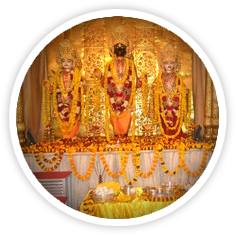
Shri Raghunathji Temple
Raghunath Mandir is perhaps the most famous of the Jammu Temples. It is the largest temple complex in Northern India. Situated in the heart of the city in the Raghunath Bazar, the temple was built in 1857 by Maharaja Ranbir Singh. The main temple has the idols of Lord Rama, Mata Sita and Shri Lakshman ji placed on a raised platform. The inner walls of the main temple are covered with gold sheets on three sides. There are many galleries with lakhs of saligrams. The numerous other temples in the complex are dedicated to various Gods and Goddesses of the Hindu Pantheon. The Temple also houses a Sanskrit Library containing rare Sanskrit manuscripts.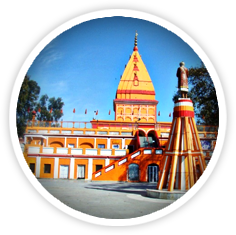
Shri Ranbireshwar Temple
The Temple is named after its founder Maharaja Ranbir Singh. The construction of the temple was started in 1863 A.D and was completed in 1878 A.D. It is the biggest Shiva temple in North India. The temple houses a huge sphatic shivlingam measuring seven and a half feet in height surrounded by ten 2 feet high billaur (crystals) lingas and galleries with 1, 25,000 tiny Shivlings brought here from the river Narmada. The Temple is located on the Shalamar Road about a kilometer from the Raghunath Bazaar.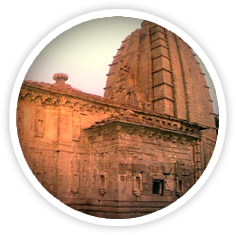
Panchvaktar Temple
The temple was constructed by Raja Guje Singh of Jammu (1687-1703) and is considered one of the oldest in Jammu. It is linked to the visit of Shankaracharya in the ninth century A.D. The temple, constructed much later, is considered sacred because of the self- originated Shivalinga ( Svayambhuva Shiva linga). One of the most revered Shiva Shrines in the city, the Lord is worshipped here in the Swachananda form having five faces representing the totality of Shiva in His most abstract form. Hence it is known as Panchvaktar. The temple is also popularly known as ‘ Rupay Wala Mandir’ as coins have been embedded in the floor slabs. It seems that there were also inscriptions in Dogri script on the exterior of the surrounding walls. The Temple is situated in a lane off the Residency Road barely a kilometer from the Raghunath Bazar.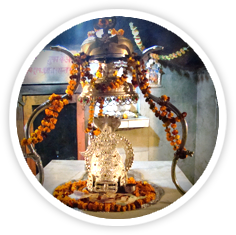
Peer Kho Temple
During the reign of Raja Biram Dev of Jammu (1454 – 95) a famous mendicant Jogi Guru Garib Nath belonging to the Guru Gorakh Nath order came to Jammu and resided at Peer Kho. Kho means cave in the local dialect. He came to be known as Peer-i-Kho and thus with the passage of time the cave got its name. The cave is also known as the Jamwant Gufa (cave) as the bear hero of Ramayana is believed to have meditated here. A Shivlinga is established inside the cave. Devotees throng the cave on Puranmashi, Amavasya and Ekadashi and during Shivratri. The temple is situated on the Circular Road, 2 kms from Raghunath Bazar.
Rani Kalhuri Devi Temple
The temple was constructed probably in 1889-90 AD by Rani Shuba Devi of Kalhur state wife of Maharaja Ranbir Singh and hence is known as Rani Kalhuri Devi Temple. This temple houses the idols for Lord Rama and Sita on one side and Shiv Parvati Idols on the other side. The temple is situated on the Circular Road about half a kilometer from the Peer Kho temple.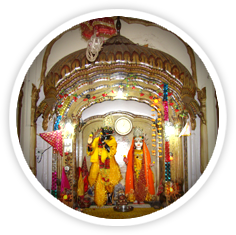
Ram Talai Temple
Situated on the Circular Road and in the vicinity of Rani Kalhuri Devi temple, this temple houses the images of Lord Krishna and Radha. The temple has beautiful pond and garden in its surroundings.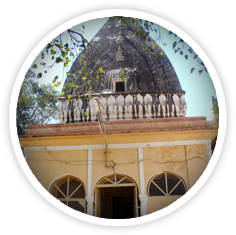
Radha Krishan Rukmani Temple
The temple houses the idols of Lord Krishna, Radha and Rukmani. The temple is situated on the Circular Road just half a km from the Ram Talai Temple Jammu.
Panjthirthi
The Panjthirthi locality is situated towards the northern extremity of the Jammu City. This is the oldest part of the City and has a cluster of old temples which are over a hundred years old. Five Temples in close proximity of each other are considered by the people of Jammu as equivalent of the Panch Tiraths and thus the name Panjtirthi.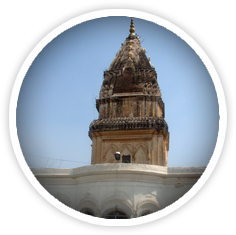
Sardaran Temple
This temple is situated just opposite the Radio station, panjthirthi. It was constructed by Sardar Attar Singh during 1856-85 AD. It is also known as Sardaran-Ka-Mandir.The temple is dedicated to Lord Rama, Sita and Lakshman Ji and Lord Shiva.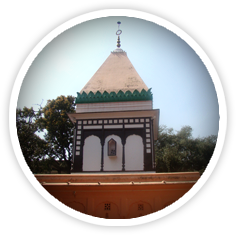
Radhey- Shayam Temple( Billo mandir)
This is one of the oldest temples of the city situated in Panjthirthi. The temple was constructed in 1839 AD by Bahi Charan Dass. The temple has beautiful idols of Radha Ji and Lord Krishna. It is also known as Billo temple after the name of the priest who took care of the temple for many years.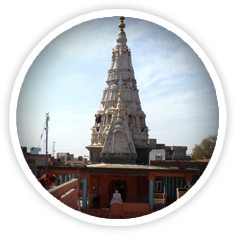
Shri Satya Naryan Temple
The temple is located on the second floor of the temple complex. It houses the idols of Shri Satya Narayan Ji and Mata Lakshami Ji. A small adjoining temple has a magnificent idol of Garud Devji. The temple was built during the reign of Maharaja Partap Singh Ji. It is located near the Billu Temple.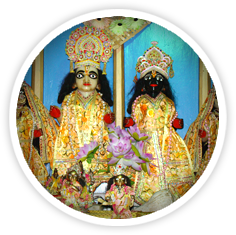
Shri Banwari Dass Temple
The temple is located at the entrance of Chaugan Salathia outside Mubarak Mandi . The unique feature of this old temple is that it has the statues of Lord Rama, Mata Sita , Lakshman Ji and his wife Urmilla.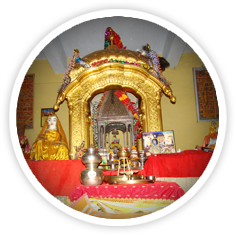
Shri ShivNabh Temple
This temple was constructed during 18th century and located inside the Mubarak Mandi complex. Devoted to Lord Shiva, the Shivling in the shrine appears to be emerging from the navel (Nabhi) of Lord Vishnu. The cupola over the Shivling is gilded completely with gold. The temple also houses two very old paintings depicting the city of Janakpuri from where Mata Sita hailed.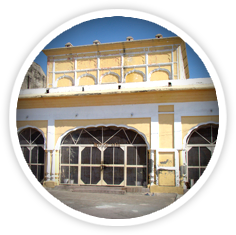
Gaddadhar Temple
The temple is situated just outside the Mubarak Mandi complex. It houses two life size statues of Shri Gaddadhar ji and Devi Lakshmi. The Temple was built by the Dogra Rajas during 18th century.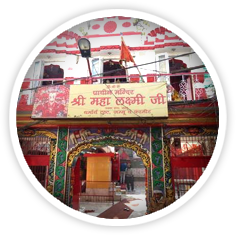
Maha Lakshmi Temple
The ancient Devi Maha Lakshmi Temple is situated at Pacca Danga. The temple was built by Maharaja Ranbir Singh and houses a beautiful marble idol of Maha Lakshmi. The temple witnesses great festivity on the eve of Diwali.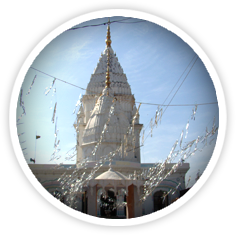
Diwan Temple
The temple is located in Kacchi Chawni in the centre of Jammu City. It is dedicated to Mata Lakshmi and Bagwan Narayan Ji. The temple was built by Diwan Jawala Sahai the Prime Minister of both Maharajas Gulab Singh and Ranbir Singh. The temple is a huge structure built in about 1860 AD. It is popularly known as Diwan-i-da-Mandir. The temple is also embilshed with frescos and wall paintings.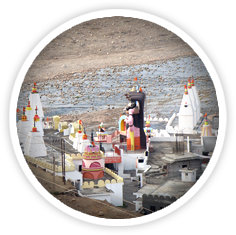
Har-Ki-Temple Complex
The temple complex is situated on the banks of river Tawi. The complex consists of many temples and gigantic images of the Hindu deities.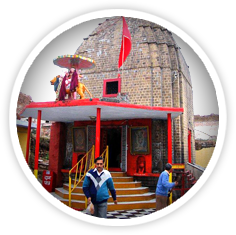
Bawey Wali Mata
This is one of the most important Shakti shrines of Jammu region. The temple is situated inside the Bahu Fort and was built shortly after the coronation of Maharaja Gulab Singh in 1822. It is also known as the Mahakali Temple the reigning deity of the City of Jammu. The Shrine is considered second only to Mata Vaishno Devi Shrine. An annual nine day Navrata fair is held during the Navratras. On Tuesday and Sunday a large numbers of devotees pay their homage to Devi.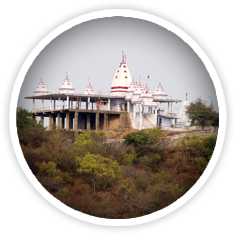
Maha Maya Temple
Located on the ridge facing the Bahu Fort in the midst of the City Forest on the bye Pass road is the Mahamaya Temple. The temple houses the manifestation of the Mata in the form of a pindi. The temple provides a panoramic view of the magnificent city forests and the Jammu City. It is said to have been constructed by Maharaja Ranbir Singh of Jammu (1857-1885).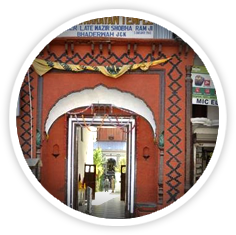
Lakshmi Naryan Temple
This is an old temple of Jammu located in Gandhinagar. The temple houses the idols of Mata Lakhami and Bagwan Narayan Ji.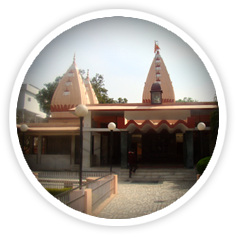
Panch Mandir, Gandhi Nagar
The temple is situated in Gandhinagar, Jammu. The temple complex has five temples and thus it is also known as Panch Mandir.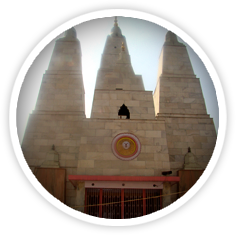
Doodha Dhari Temple
The temple is situated in Shastri Nagar locality in Jammu city. The temple is named after the priest who lived here and it is believed that he survived only on milk. Hence the temple is named as Doodha Dhari temple.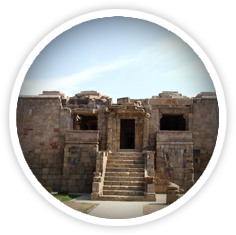
Ancient Shiv Temple Sunjawan
The temple is situated in Sunjawa Village near the bank of an ancient pond. The temple houses a red stone Shivlingam. The temple complex has a chatuburji idol of Lord Ganesha. The temple was built in 1861 by Mahatma Kunju during the reign of Maharaja Ranbir Singh.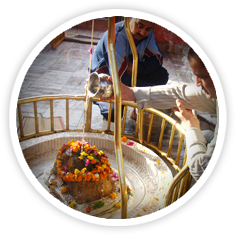
Aap Shambhu Temple
The temple is situated at Sathrian in Roopnagar area of Jammu city. The temple has self-made stone Lingam. According to a legend, in the times immemorial this entire place was an uninhabited jungle, the milky cows and buffaloes used to come to the Lingam after grazing and shed entire milk on the Lingam. Heavy rush of devotees is witnessed on the occasion of Mahashivratri.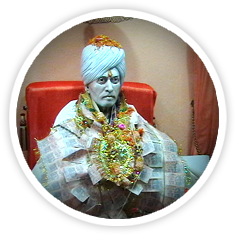
Bhagwan Gopinath ji Ashram
Bhagwan Gopinath Ji Ashram is located at a distance of 5 Kms from Jammu Bus Stand near Udhaywala Bohri.The Ashram houses the marble statue of Bhagwan Gopinathji, who is the most venerated of Kashmiri pandit saints. It also has a lage library having collection of books of spiritual and academic interest. A heritage gallery showcases the life and teachings of ( Bhagwanji) in the form of relics, models and pictures.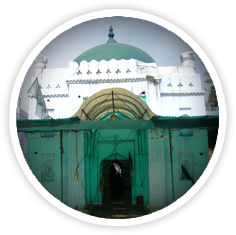
Peer Mitha
The tomb of Pir Mitha is situated in the interior of the old Jammu city in the locality bearing the same name. In the mid of 15th century A.D., a Sayid Qutul Alam came to Jammu from Sawazwar and made many of hindus and muslims his followers. He was contemporary of Raja Ajaib Dev, who ruled Jammu from 1423A.D to 1454 A.D. As sugar and sweets were his favourite so most of his followers brought him gifts of milk, sugar and sugar cane. He was also sweet spoken to people as hence was popularly known as Pir Mitha.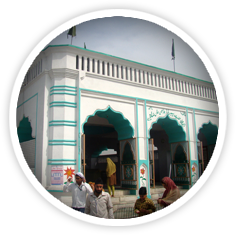
Peer Budhan Ali Shah Sahib
The shrine of Peer Budan Ali Shah situated at Satwari near the Jammu Airport is also popularly known as Peer Baba. Peer Budan Ali Shah was a close friend of Shri Guru Nanak Dev ji. He was born at Talwandi in 15th century A.D. Peer Budhan Ali Shah was a bachelor and vegetarian all his life, who according to his followers, subsisted on milk. Another shrine of the Peer is said to be at Anandpur Sahib in Punjab. A large number of devotees of all faiths throng the shrine on every Thursday.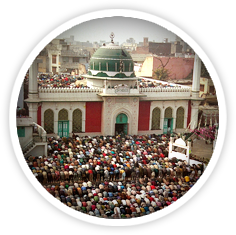
Jama Masjid
It is the oldest and the biggest Masjid of Jammu located in Talab Khatikan a kilometer away from Raghunath Bazar. Heavy rush of devotees is witnessed on the eve of Id-ul-Milad and Friday’s.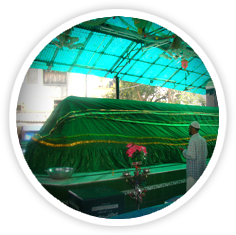
Peer Roshan Shah Wali
It is one of the prominent Muslim Shrines located at Gumat in the heart of Jammu city near Shri Raghunathji temple. It is the (makbara) mausoleum of Peer Roshan Shah Wali. He is believed to have come from Arabia in 648 samvat and took his abode near Gumat which was then a jungle. After the death of the saint a mausoleum was built at the spot where he resided. This mausoleum has since continued to be the residence of Peers and pious men. The original structure made of stones and clay was rebuilt by Maharaja Ranbir Singh. Pir Roshan Shah was a very tall person and so came to be known also as Pir Nau Gazia ( the nine foot tall Pir).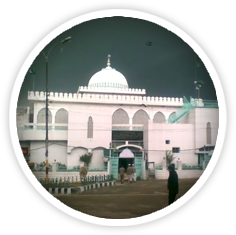
Jama Masjid
This is another prominent mosque of Jammu and is located in the Usatd mohalla near Panjthirthi. Heavy rush of devotees is witnessed here on Fridays and on Eid.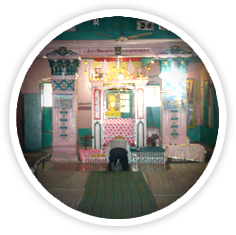
Gurudwara Sunder Singh
This is a historical Gurudwara of Jammu located just in the vicinity of Raghunath Bazar. The Gurudwara was built about 166 years back by S. Sunder Singh Khurana Ji who lived in Amritsar. The Gurdwara has beautiful and ornate interiors with colourful floral motifs adorning the walls.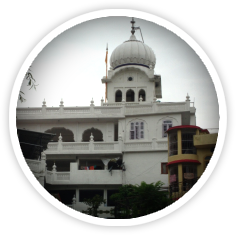
Gurudwara Chatti Padshahi Tali Sahib
The Gurudawara Sahib was made by Baba Bhagat Singh Ji and his wife Mata Tej Kour ji in 1947. Baba Bhagat Singh Ji was the follower of Baba Alibegh Ji and settled and built the Gurudwara. The Gurudwara is popularly known as Gurudwara Chatti Padshahi Tali Sahib Ji .This is an ancient and revered Gurudawara is located at Talab Tillo.
Kalgidhar Gurudwara, Rehari
The Gurudwara is located at Rehari Chowk just 2 Kms from Jammu bus stand on the National Highway.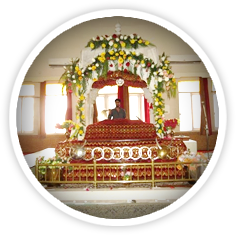
Gurudwara ,Nanak Nagar
This is one of the biggest Gurdwaras in Jammu and is located in Nanak Nagar locality of the City.
Gurudwara Sh.Guru Nanak Devji
Also known as the Panchyati Gurudwara. It is situtated in upper bazar near Mubarak Mandi complex. It is venerated by both Sikhs and Hindus. The unique feature of this Gurudwara is that it has a 3ft tall white marble statue of Guru Nank Devji. Maharja Partap Singh is said to have installed the statue.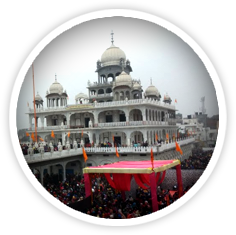
Gurudwara Shri Guru Nanak DevJi, Chand Nagar
This Gurudwara is situated in the heart of the city at Chand Nagar near Jewel Chowk. Heavy rush of devotees is witnessed here on Gurupurabs.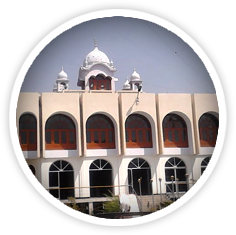
Sant Rocha Singh Ashram (Digana Ashram)
This Gurudwara is situated on the national highway at Digana. The Gurudwara has a very beautiful building. The ashram provides free education to orphan children. Heavy rush of devotees is witnessed here during gurupurabs and Sundays.
St. Paul’s Church
St. Paul’s Church on Wazarat Road is the oldest Church. On 11th April, 1928, Miss Isabella Plumb laid the foundation stone of this church.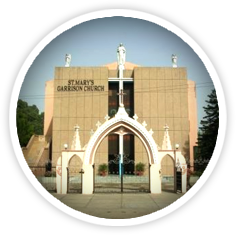
St. Cathedral Garrison Church
St. Cathedral Garrison Church (Catholic) on the national highway which was built in 1986 and is dedicated to Rt. Rev. Dr. Hippolytus Kunnunkal, Then Bishop of J&K. Other churches are Roman Catholic Church near BC Road, St.Peter’s Church, Christian Colony, and Indian National Evangelical Church, Near Ustad Mohalla, Jammu.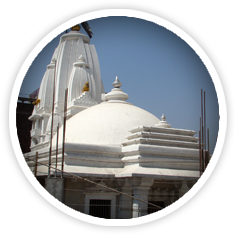
Shri Jain Shwetambar Temple, Jammu
The temple is situated at Patel Chowk in the heart of the old city. This is a beautiful small marble temple having images of Lord Mahavira and the other Tirthankaras. All the images are of marble. The image of Lord Mahavira has been brought from Cambay near Ahmedabad and is believed to have been discovered 1100 years ago.Posted by : Vipul koul
Subscribe to:
Posts (Atom)


